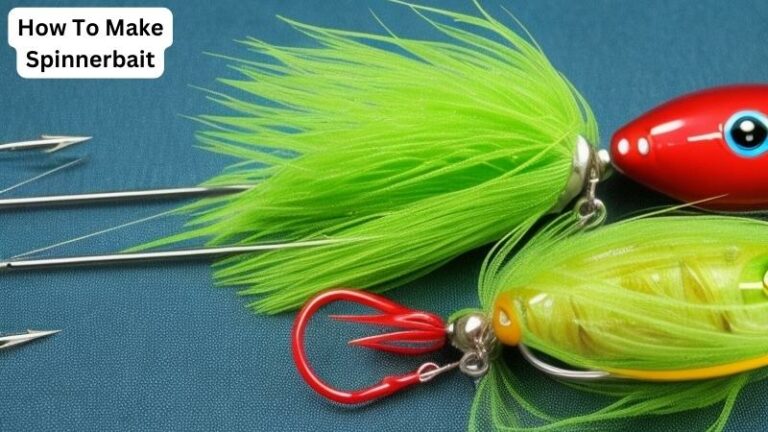How To Clean Crappie Quickly
Today we discuss How To Clean Crappie Quickly. Cleaning crappie can be a bit intimidating, but fear not! We’re here to guide you through the process with easy-to-follow instructions. Say goodbye to scales and hello to fillets as we uncover the secrets to cleaning crappie quickly. Get your knives ready, because it’s time to embark on a fin-tastic cleaning adventure!
Now, before we get into the nitty-gritty of crappie cleaning, let’s go over some essential tools you’ll need. From a good fillet knife to a cutting board, having the right gear will make the cleaning process a breeze. So gather your supplies, grab your fishing gear, and let’s get ready to learn how to clean crappie like a pro!
How to Clean Crappie Quickly: A Step-by-Step Guide
Crappie is a popular fish among anglers due to its delicious taste and challenging catch. However, cleaning crappie can be a daunting task for many, especially if you’re looking for a quick and efficient way to do it. In this article, we will provide you with a step-by-step guide on how to clean crappie quickly, allowing you to enjoy your catch in no time.
Gear Up: Essential Tools for Cleaning Crappie
Before you start cleaning crappie, it’s important to gather all the necessary tools. Here are the essential gear you’ll need to ensure a smooth cleaning process:
- A sharp filleting knife: Look for a flexible filleting knife with a thin, sharp blade. This will enable you to precisely remove the skin and bones.
- Cutting surface: Use a cutting board or a fillet board that provides a stable and clean surface for cutting the fish.
- A pair of needle-nose pliers: Pliers will come in handy for removing any remaining bones and pin bones from the fillets.
- Disposable gloves: Wearing gloves will protect your hands from any potential cuts or fishy odors.
- A fillet knife sharpener: Keeping your fillet knife sharp throughout the cleaning process is crucial for clean and efficient cuts.
Now that you have all the necessary tools, let’s dive into the step-by-step process of cleaning crappie quickly:
Step 1: Prepare the Workstation
Start by setting up a clean and organized workstation. Lay down your cutting surface, ensuring it’s stable and secure. Put on your disposable gloves to maintain hygiene and prevent any fishy smells from lingering on your hands. Make sure you have access to a water source for rinsing off the fillets during the cleaning process.
Pro tip: Consider investing in a portable fish cleaning station or a cleaning table with a sink attachment for more convenience and cleanliness.
Step 2: Scaling and Gutting
Begin by scaling the crappie using the backside of your filleting knife or a scaling tool. Scrape the scales off the fish, working from the tail towards the head. Once the fish is scaled, make a small incision near the vent of the fish to create an opening for gutting. Use your filleting knife to carefully remove the insides of the fish, taking care not to puncture any organs, and discard them.
Pro tip: To speed up the gutting process, consider investing in a gutting tool specifically designed for cleaning fish.
Step 3: Filleting the Crappie
With the fish gutted, it’s time to fillet the crappie. Place the fish on the cutting surface with the belly facing up. Make an incision near the head, just below the gills, cutting down towards the backbone. Without cutting through the backbone, angle your knife towards the tail and carefully glide it along the spine, separating the fillet from the fish. Repeat this process for the other side of the crappie, ensuring you have two clean and boneless fillets.
Pro tip: Use your needle-nose pliers to remove any remaining bones or pin bones from the fillets, ensuring a smooth and bone-free eating experience.
Step 4: Rinsing and Storing
After filleting the crappie, rinse the fillets under cold water to remove any stray scales or debris. Pat the fillets dry with a paper towel and store them in an airtight container or ziplock bag, ready for cooking or freezing. Properly labeled and dated, the fillets can be stored in the refrigerator for up to two days or in the freezer for longer-term storage.
Pro tip: For optimal freshness, consider vacuum-sealing the fillets before freezing.
Tips and Tricks for Quick and Efficient Crappie Cleaning:
Tip 1: Chill the fish
Prior to cleaning crappie, it’s recommended to chill the fish on ice for at least 20 minutes. This firms up the flesh, making it easier to handle and clean.
Tip 2: Use a fish scaler
If you find it challenging to scale crappie using a knife, consider investing in a fish scaler tool. It simplifies the scaling process and helps maintain a clean workspace.
Tip 3: Practice makes perfect
Don’t be discouraged if the first few attempts at cleaning crappie don’t yield perfect results. With practice, you will gradually improve your technique and become more efficient at filleting crappie quickly.
Common Mistakes to Avoid:
Mistake 1: Rushing the process
Cleaning crappie quickly doesn’t mean rushing through the process. Take your time to ensure clean cuts and proper removal of all bones.
Mistake 2: Dull knife
Using a dull fillet knife can make the cleaning process more difficult and time-consuming. Keep your knife sharp and honed to ensure smooth cuts.
Mistake 3: Neglecting hygiene
To maintain food safety and avoid contamination, always wear gloves and clean your workspace thoroughly after cleaning crappie.
By following these steps and tips, you’ll be able to clean crappie quickly and efficiently, allowing you to savor the delicious flavors of this prized catch without delay. Happy cleaning and bon appétit!
key takeaways:
- Cut off the head and tail of the crappie.
- Make a shallow cut along the belly to remove the guts.
- Scale the fish using a spoon or scaler.
- Rinse the crappie with cold water to remove scales and slime.
- Pat the fish dry and cook it immediately or store it in the refrigerator.

Faqs for How To Clean Crappie Quickly:
When it comes to cleaning crappie quickly, a few key steps can make the process much smoother. Firstly, start by scaling the fish using the back of your knife or a dedicated scaling tool. Next, make an incision behind the gills and cut downwards along the belly, removing the entrails. Rinse the cavity well, and if desired, remove the head by cutting behind the gills at an angle.
Afterward, you can remove the dorsal fin using a pair of kitchen scissors or a fillet knife. To fillet the crappie, make a cut just behind the head and run the knife along the backbone, avoiding any bones. Repeat this process on the other side of the fish. Finally, remove any remaining rib bones by making a shallow cut along the ribs and lifting them away. Rinse your fillets under cold water, and they’re ready to cook!
While it’s not necessary to remove the scales before cleaning crappie, scaling the fish can make for a more pleasant dining experience. Scales can be tough and sometimes trap dirt or bacteria, so removing them can improve the taste and texture of the fillets. However, if you prefer to leave the scales on, make sure to rinse the fillets thoroughly after cooking to remove any remaining scales.
If you’re looking to save time, there’s no harm in leaving the scales on. Just be aware that you may experience a slightly different eating experience. Some people find that the skin of scaled crappie can become chewy or tough when cooked. Ultimately, it’s a matter of personal preference, so feel free to experiment and find the method that works best for you!
If you’re looking to speed up the process of filleting crappie, a few tips can help you work more efficiently. Firstly, make sure you have a sharp fillet knife. A dull knife can slow you down and make the task more challenging. Additionally, using a flexible fillet knife can allow you to navigate the contours of the fish more easily.
Another time-saving technique is to remove the rib bones in one go. Instead of making multiple small cuts along the rib bones, make a single shallow cut along the entire length of the ribs and then lift them away in one motion. This can save you time and effort, especially if you’re cleaning a large number of crappie.
No one wants to bite into a crunchy surprise when enjoying crappie fillets! To ensure your fillets are bone-free, take your time and be mindful when filleting the fish. Make sure to use a sharp knife and work carefully to avoid leaving any small bones behind in the flesh.
If you’re new to filleting crappie, a useful trick is to run your fingers lightly over the fillet. This can help you detect any remaining bones that you missed during the initial cleaning process. Even the most experienced anglers can miss the occasional bone, so it’s always a good idea to double-check before cooking.
While there is no magic shortcut to instantly clean crappie, there are a few techniques that can help speed up the process. One method is to use an electric fish scaler. This tool can quickly and efficiently remove scales, saving you the time and effort of scaling each individual fish manually.
Additionally, some people find that employing a fish cleaning station can streamline the process. These stations often include a dedicated area for scaling, gutting, and filleting fish, providing a more organized space and saving you valuable time searching for the right tools and supplies.
How to Fillet Crappie Quickly with Mr. Crappie
Summary
Cleaning crappie can be quick and easy. Start by removing the scales with a knife or scaler. Then, make a shallow cut behind the gills and remove the entrails. Rinse the fish thoroughly and pat dry. Store in a cooler with ice until ready to cook. Remember to follow proper hygiene practices and clean your workspace afterward. With these simple steps, you can enjoy delicious crappie without any hassle.



